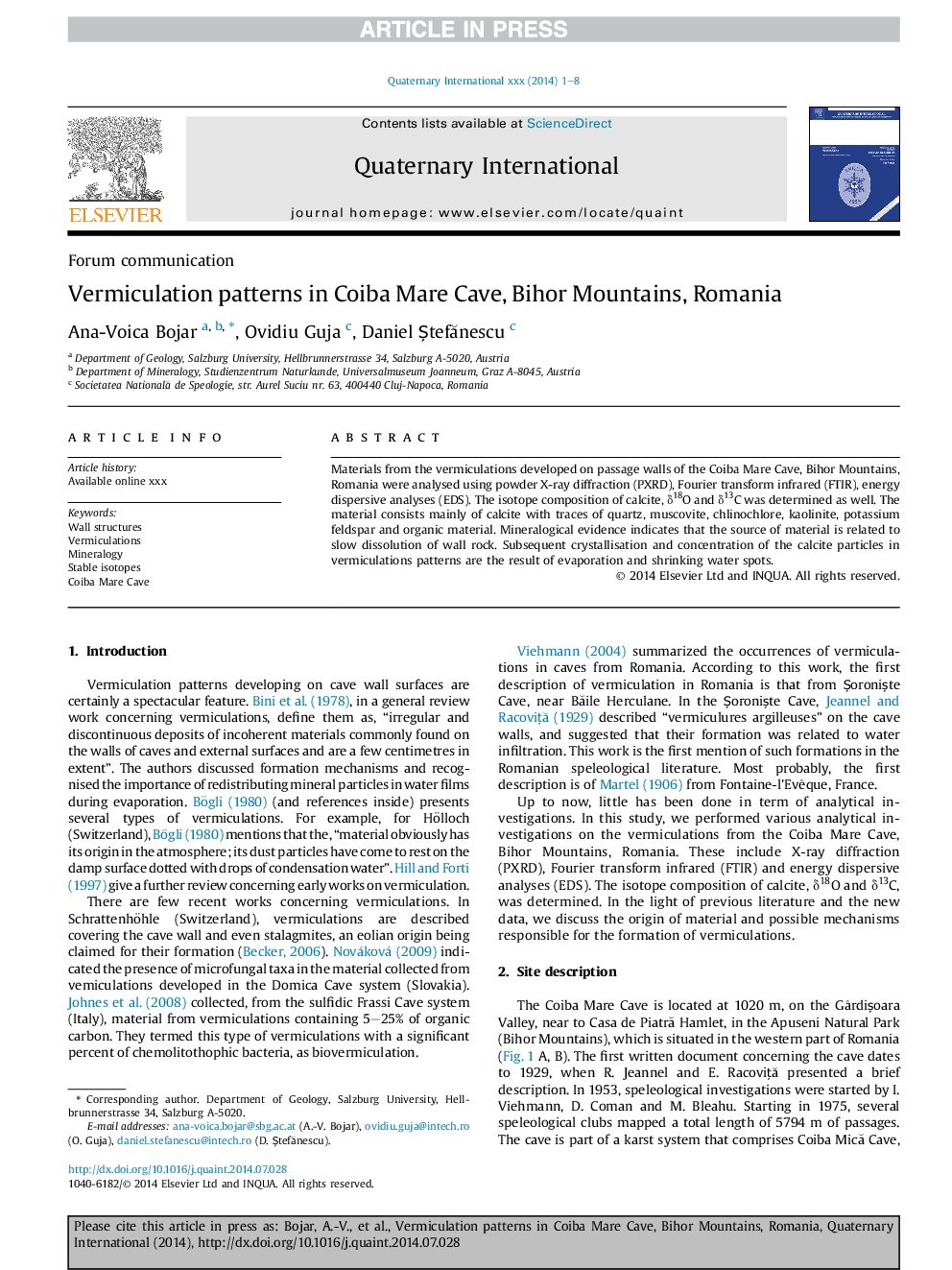| Article ID | Journal | Published Year | Pages | File Type |
|---|---|---|---|---|
| 7451963 | Quaternary International | 2015 | 8 Pages |
Abstract
Materials from the vermiculations developed on passage walls of the Coiba Mare Cave, Bihor Mountains, Romania were analysed using powder X-ray diffraction (PXRD), Fourier transform infrared (FTIR), energy dispersive analyses (EDS). The isotope composition of calcite, δ18O and δ13C was determined as well. The material consists mainly of calcite with traces of quartz, muscovite, chlinochlore, kaolinite, potassium feldspar and organic material. Mineralogical evidence indicates that the source of material is related to slow dissolution of wall rock. Subsequent crystallisation and concentration of the calcite particles in vermiculations patterns are the result of evaporation and shrinking water spots.
Keywords
Related Topics
Physical Sciences and Engineering
Earth and Planetary Sciences
Geology
Authors
Ana-Voica Bojar, Ovidiu Guja, Daniel ÈtefÄnescu,
